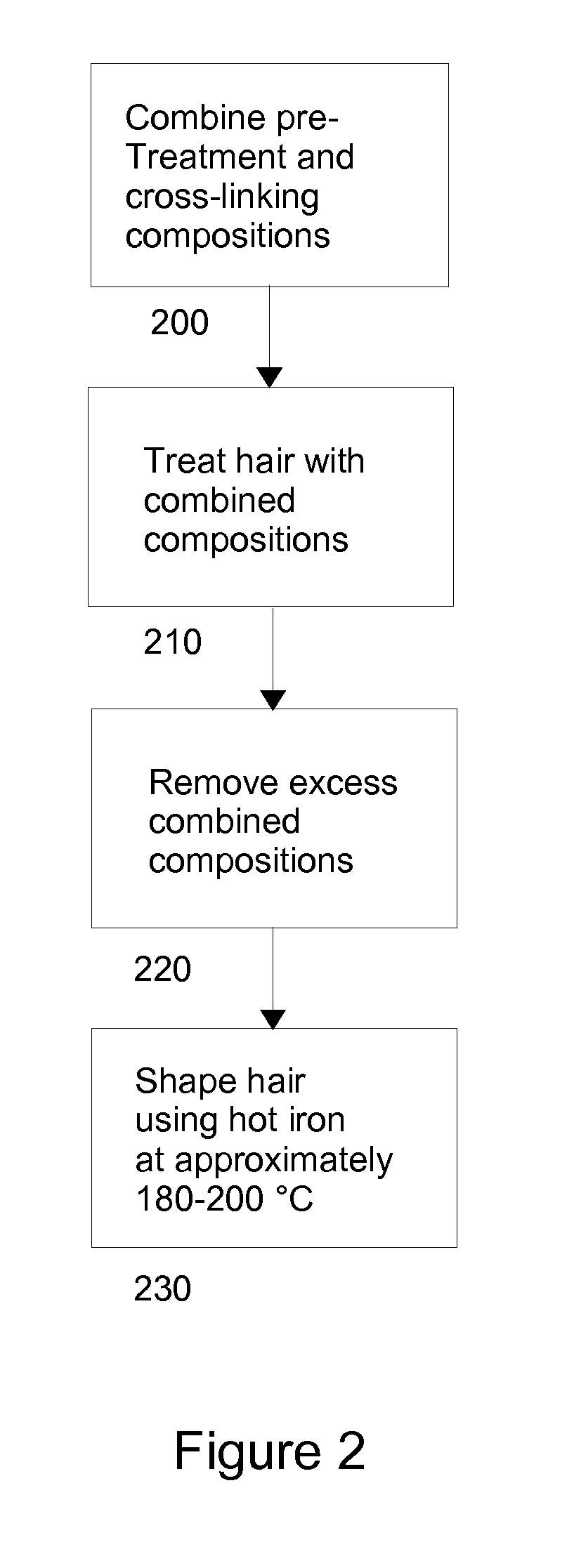Method and chemical composition for reshaping hair
a hair and chemical composition technology, applied in the field of hair care, can solve the problems of brittle hair, excessive damage, and insufficient effectiveness of most commercial acidic shampoos employed for this purpose, and achieve the effects of less damage, improved hair texture, and improved hair textur
- Summary
- Abstract
- Description
- Claims
- Application Information
AI Technical Summary
Benefits of technology
Problems solved by technology
Method used
Image
Examples
Embodiment Construction
[0013]One or more embodiments of the present invention employ oils that are used in the prior art or are similar to those used in the prior art, but instead of solely serving an adjunct purpose (e.g., conditioning, lubricating, basis for marketing claims to enhance consumer appeal / salability) as in the prior art, they are employed as required reactants in the chemical straightening process and thereby serve as functional ingredients as well as integral components of the invention.
[0014]In one example use of an embodiment of the present invention, tresses of human hair were treated for approximately 15 minutes under ambient conditions with a low concentration of aqueous sodium hydroxide (˜0.6%). Selection of a low concentration of sodium hydroxide and a relatively brief time of treatment, provided the high pH required to swell the hair yet caused negligible damage to the hair compared with the prior art and, in practice, would reduce risk to the skin and eyes. Subsequently, the tress...
PUM
 Login to View More
Login to View More Abstract
Description
Claims
Application Information
 Login to View More
Login to View More - R&D
- Intellectual Property
- Life Sciences
- Materials
- Tech Scout
- Unparalleled Data Quality
- Higher Quality Content
- 60% Fewer Hallucinations
Browse by: Latest US Patents, China's latest patents, Technical Efficacy Thesaurus, Application Domain, Technology Topic, Popular Technical Reports.
© 2025 PatSnap. All rights reserved.Legal|Privacy policy|Modern Slavery Act Transparency Statement|Sitemap|About US| Contact US: help@patsnap.com


